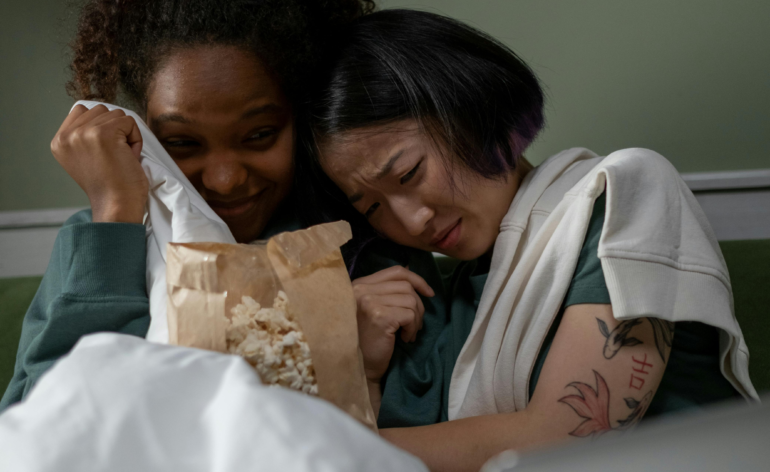The Evolution of Extreme Horror: From Cult Classics to Mainstream
Horror has always been boundary-pushing but extreme horror takes it to the next level, for those who want visceral, disturbing experiences. From the grindhouse era to now, the genre has become a platform to explore societal decay, power and moral weakness. As Netflix and Shudder brought transgressive films into the mainstream, they’ve moved from underground to above ground. Interestingly, the thrill of high stakes horror is like the thrill of gambling, players look for bonuses like the BetMGM bonus code to level up their experience in the same way they seek out creepy Easter eggs in the background of disturbing scenes.
The Origins of Extreme Horror
Extreme horror started in the grindhouse cinemas of the 1960s and 1970s, where low budget films would deliver disturbing narratives with graphic violence. Films like The Texas Chain Saw Massacre (1974) and Last House on the Left (1972) were more than just blood and guts — they explored deep human fears, societal flaws and power struggles. These films would lay the groundwork for what would become a hallmark of the subgenre: the willingness to confront uncomfortable truths through uncomfortable images.
These films were not for casual watching; they were meant to push the audience to their psychological and emotional limits. The blood and guts were not just for gore; they were a reflection of the times, tackling issues like the Vietnam War, civil unrest and the growing disillusionment with the American dream. As violent as these films were, they also provided a way for the viewer to explore the darkest corners of society and themselves.
From Underground to Streaming
In the ‘80s and ‘90s, extreme horror started to build a cult following through VHS tapes and word of mouth. Films like Cannibal Holocaust (1980) and A Serbian Film (2010) found an audience willing to accept their brutal themes. But it wasn’t until the rise of the internet and streaming in the 2000s that extreme horror went mainstream. With the arrival of platforms like Shudder, which is dedicated to horror, and Netflix, more people had access to films that were previously in the darkest corners of the genre.
As these films became more available, the conversation around them changed. Audiences and critics started to recognize the artistry in extreme horror and moved it from a shock-based genre to a form of social commentary. Today, films like Martyrs (2008) and The Human Centipede (2009) are not just about gore but about trauma, pain and human endurance. As extreme horror grows in popularity, its influence is seeping into mainstream films, with directors like Ari Aster (Hereditary, Midsommar) and Robert Eggers (The Witch, The Lighthouse) incorporating elements of emotional and psychological horror that are at the heart of the genre.
A Shared Experience: Horror and Risk
What makes extreme horror so good is it makes us feel deep emotions, just like a near miss or a high-risk moment in real life. Both are about unpredictability – the suspense that keeps us on the edge of fear and anticipation. In horror, it’s the not knowing what’s next: will they survive? What’s around the corner? Is it safe to no longer cover our eyes? This is what hooks us in and draws us deeper into the chaos.
In extreme horror, the stakes are literally life or death, if not higher. (Higher how? Well, the way these characters often die means that death alone isn’t the worst possible fate.) There’s a physical reaction when we see a character going through a nightmare, whether psychological or survival. These films don’t just use jump scares like traditional horror but get raw and visceral. We feel the desperation and fear along with the character and it’s an immersive experience that keeps our hearts racing. It’s the not knowing that makes it exhilarating and terrifying. We can’t wait for it to end, yet we keep coming back for me. That’s why so many of these movies spawn franchises that produce an almost comical number of sequels.
This intense experience isn’t just about survival, it’s about facing fear in a controlled environment. By going deep into extreme horror, we can process our own anxieties and stresses. We face our deepest fears – death, pain, loss – but we’re safe in our seat. When the credits roll, we feel catharsis, a sense of relief after grappling with those dark emotions vicariously. It’s cheaper than therapy (and it’s also worse than therapy and make leave you requiring therapy).
Extreme horror takes that catharsis to another level, it’s always subverting expectations. It’s unpredictable and that’s what we love. Characters we think will survive don’t. The endings are ambiguous, messy or cruel and we’re left unsettled long after the film is over. Unlike traditional horror where tropes give us a sense of safety, extreme horror keeps us guessing, always challenging us to expect the unexpected and enjoy it.


